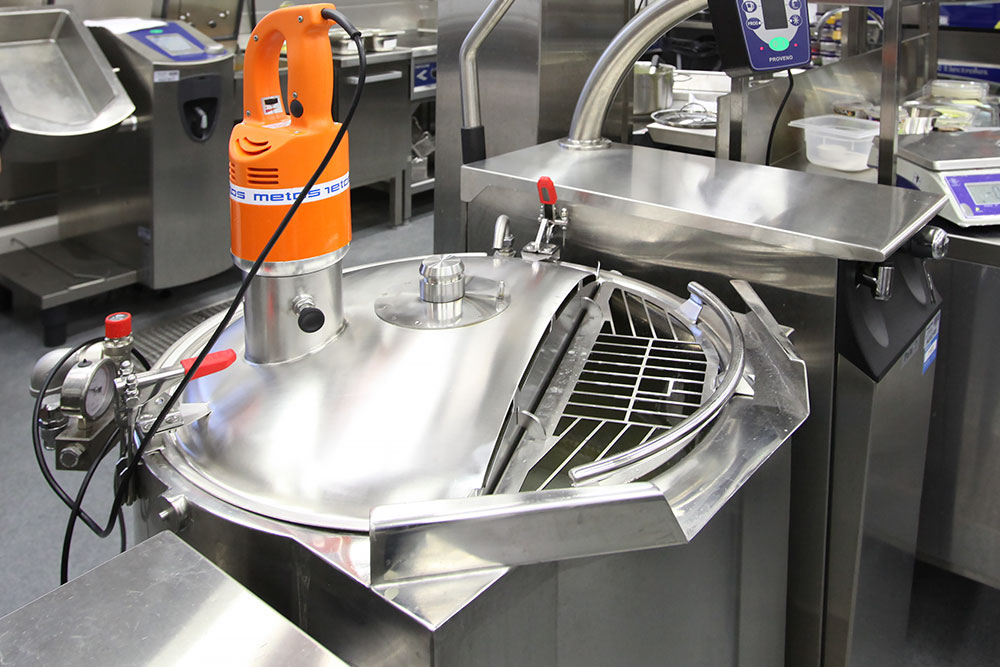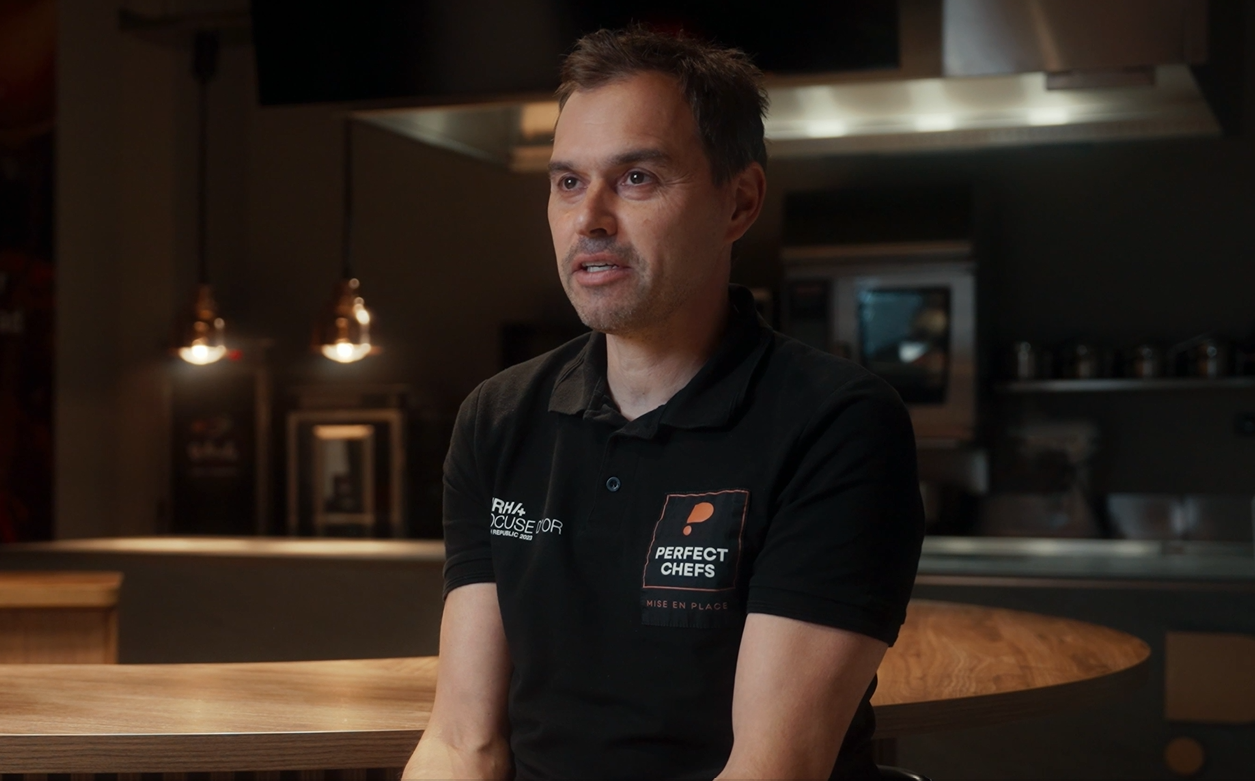-
Preparation
-
Cooking
- Cooking Show all products in category
- Back
- Kettles
- Hot Fill pumps
- Sous Vide basins
- Pressure cookers
- Ovens
- Ranges
- Bratt pans
- iVario
- Pizza equipment and pizza accessories
- Restaurant equipment series
- Griddles
- Grills
- Fryers
- Salamanders and toasters
- Pasta cookers
- Sushi machines
- Hot dog warmers and steamers
- Circulators
-
GN containers and trays
-
Food distribution and food transport
-
Serving units and worktops
- Serving units and worktops Show all products in category
- Back
- Buffet series
- Heated drawers
- Bain-maries
- Counters with heated top
- Heated cupboards
- Cold basins
- Cold counters
- Cold drawers
- Cold work station
- Pizza work station
- Neutral counters
- Plate dispensers
- Water dispensers
- GN dividers for basins and drawers
- Heating lamps and heaters
-
Small equipment for serving
-
Glass display cases and air curtain merchandisers
-
Coffee brewing machines
-
Bar equipment and bar furniture
-
Ice and Ice cream / gelato
-
Cold storage and chilling
-
Dishwashers
- Dishwashers Show all products in category
- Back
- Glasswashers
- Undercounter dishwashers
- Front loaded dishwashers
- Hood type dishwashers
- Pot washers
- Granule washers
- Rack conveyor machines
- Pre-wash machines for WD hood type machines
- Pre-wash machines for WD rack conveyors
- Flight-type washers
- Tray washers
- Trolley washers
- Multiwasher
-
Dishwashing accessories and furnitures
- Dishwashing accessories and furnitures Show all products in category
- Back
- Dishwashing baskets
- Cutlery boxes
- Furniture for undercounter dishwashers
- Furniture for hood type dishwashers
- Furniture for pre-wash machines
- Furniture for pot washers
- Furniture for rack conveyor machines
- Sorting units for dishwashing department
- Pre-wash showers
- Floor washers
- Steam and pressure washers
-
Water filters
-
Kitchen furniture
-
Trolleys
- Trolleys Show all products in category
- Back
- Service trolleys
- Service trolleys with wooden tiers
- Shelf trolleys
- Trolleys for GN containers
- Basket trolleys
- Dispenser trolleys
- Ward service trolleys
- Kettle accessory trolleys
- Tray and cutlery trolleys
- Multipurpose trolleys
- Platform trolleys
- Basin trolleys
- Biowaste and waste trolleys
- Tray return trolleys
- Dish return trolleys
- Plate cassette trolleys
- Flour and spice trolleys
- Salad washing trolleys
- Supplement food trolleys
- Trolleys for transport boxes
- Lifting trolleys
- Laundry trolleys
-
Laundry equipment
-
Outlet
- Outlet Show all products in category
- Back
- Preparation outlet
- Cooking outlet
- Food distribution and food transport outlet
- Serving units and worktops outlet
- Glass display cases and air curtain merchandisers outlet
- Coffee brewing machines outlet
- Bar equipment and bar furniture outlet
- Cold storage and chilling outlet
- Dishwashing outlet
- Kitchen furniture outlet
- All outlet products
-
Preparation
-
Cooking
- Cooking Show all products in category
- Back
- Kettles
- Hot Fill pumps
- Sous Vide basins
- Pressure cookers
- Ovens
- Ranges
- Bratt pans
- iVario
- Pizza equipment and pizza accessories
- Restaurant equipment series
- Griddles
- Grills
- Fryers
- Salamanders and toasters
- Pasta cookers
- Sushi machines
- Hot dog warmers and steamers
- Circulators
-
GN containers and trays
-
Food distribution and food transport
-
Serving units and worktops
- Serving units and worktops Show all products in category
- Back
- Buffet series
- Heated drawers
- Bain-maries
- Counters with heated top
- Heated cupboards
- Cold basins
- Cold counters
- Cold drawers
- Cold work station
- Pizza work station
- Neutral counters
- Plate dispensers
- Water dispensers
- GN dividers for basins and drawers
- Heating lamps and heaters
-
Small equipment for serving
-
Glass display cases and air curtain merchandisers
-
Coffee brewing machines
-
Bar equipment and bar furniture
-
Ice and Ice cream / gelato
-
Cold storage and chilling
-
Dishwashers
- Dishwashers Show all products in category
- Back
- Glasswashers
- Undercounter dishwashers
- Front loaded dishwashers
- Hood type dishwashers
- Pot washers
- Granule washers
- Rack conveyor machines
- Pre-wash machines for WD hood type machines
- Pre-wash machines for WD rack conveyors
- Flight-type washers
- Tray washers
- Trolley washers
- Multiwasher
-
Dishwashing accessories and furnitures
- Dishwashing accessories and furnitures Show all products in category
- Back
- Dishwashing baskets
- Cutlery boxes
- Furniture for undercounter dishwashers
- Furniture for hood type dishwashers
- Furniture for pre-wash machines
- Furniture for pot washers
- Furniture for rack conveyor machines
- Sorting units for dishwashing department
- Pre-wash showers
- Floor washers
- Steam and pressure washers
-
Water filters
-
Kitchen furniture
-
Trolleys
- Trolleys Show all products in category
- Back
- Service trolleys
- Service trolleys with wooden tiers
- Shelf trolleys
- Trolleys for GN containers
- Basket trolleys
- Dispenser trolleys
- Ward service trolleys
- Kettle accessory trolleys
- Tray and cutlery trolleys
- Multipurpose trolleys
- Platform trolleys
- Basin trolleys
- Biowaste and waste trolleys
- Tray return trolleys
- Dish return trolleys
- Plate cassette trolleys
- Flour and spice trolleys
- Salad washing trolleys
- Supplement food trolleys
- Trolleys for transport boxes
- Lifting trolleys
- Laundry trolleys
-
Laundry equipment
-
Outlet
- Outlet Show all products in category
- Back
- Preparation outlet
- Cooking outlet
- Food distribution and food transport outlet
- Serving units and worktops outlet
- Glass display cases and air curtain merchandisers outlet
- Coffee brewing machines outlet
- Bar equipment and bar furniture outlet
- Cold storage and chilling outlet
- Dishwashing outlet
- Kitchen furniture outlet
- All outlet products
Good Kitchen Design Brings many Benefits to the Everyday Life of a Professional Kitchen

When a professional kitchen is carefully designed from the beginning, the effects are long-lasting. The design impacts the efficiency of a professional kitchen’s day-to-day work and ultimately even the retention of its workforce.
Kitchen design is not just about placing equipment within a given framework. The process starts with the functional design, which goes through the business plan of the site – its concept and business idea. Then, attention shifts to processes, production methods, and logistics – what food is prepared, how it's prepared, and where it's delivered.
Design enables a "good flow" in daily operations
All areas of the kitchen should be designed to ensure that sequential activities, or workflow, can flow smoothly from one stage to another.
– The workflow is designed to make daily work are as efficient, smooth, and enjoyable as possible. This enables a 'good flow' in the kitchen's daily operations, says Veera Hakanen, leader of Metos' design team and kitchen designer.
Temporarily storage and unnecessary transfers should be avoided. Of course, compliance with regulatory requirements is also a part of this process.
Multi-functional equipment adds efficiency to the kitchen
Only after the functional design comes the equipment design. To make efficient use of the kitchen's expensive square footage, the choice of appliances must take into account their versatility.
– Multi-functional devices often cost a little more more, but on the other hand, they help to make efficient use of all the square metres in the kitchen - which is often tight. When one equipment can perform multiple functions, there's no need for a separate device for each. While a multi-functional equipment may cost more individually, it ultimately saves space and overall equipment costs, explains Veera.
Equipment choices also enable the kitchen's operations to scale with the daily rhythm.
– For example, it's worth considering whether two small combi ovens might be a better solution than one large one. If a restaurant has two small ovens, they can be used according to the current number of customers; when it's quieter, only one is on, and when there's a surge in visitors, the second combination oven is also switched on. This also saves energy, Veera suggests.
Every step in a professional kitchen counts
Planning always involves thinking about the steps taken by employees. They are important not only for the smooth running of the daily work, but also for optimizing the workforce and time management. The aim is to do as much as possible with as few steps as possible.
– Labour shortages are a problem for many kitchens, and this can be alleviated with good planning. Eliminating unnecessary steps is important. Activities are planned so that employees don't have to travel back and forth between different points. The planning pays attention to the day-to-day running of the kitchen so that it runs smoothly. For example, consider how often a worker must wash his or her hands, for example in the dishwashing process, and where he or she has to go to do so.
Aiming for a pleasant working environment for kitchen professionals
Veera feels that work ergonomics is becoming more and more involved in kitchen design and is being considered more and more.
– For example, working height and counter space play a big role for the user. Cleanability, the layout of corridors and passageways, floor drains and the height of the hoods also have an impact on the way the working environment is perceived. A professional kitchen designer can also think about the direction in which doors and hatches open and their importance in the user's daily life, she says.
Ergonomic design aims to create a pleasant working environment for the user, where it is comfortable to work. This can help to improve employee retention and thus tackle labor shortages.
– Nowadays, people are more willing to pay for ergonomics because they want to keep good workers happy in the kitchen. Restaurant managers, chefs, and other users are increasingly being consulted during the kitchen design stage, she concludes.
Utilizing every corner efficiently with illustrative images
3D modeling is also used to help with kitchen design. It is a helpful tool to make the most of every corner of the kitchen.
– When the customer gets to walk through their kitchen during the design phase, it clearly illustrates the entire kitchen setup. At this point at the latest, you can see if there are any corners left that could be used, Veera concludes.





